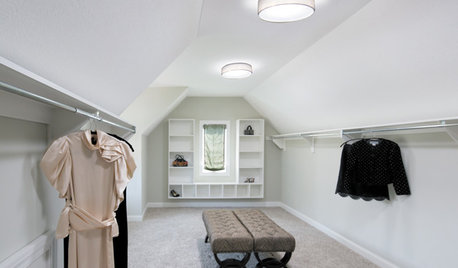simple question about using t8 tubes for vegetable seedliings
zachslc
16 years ago
Related Stories

MOST POPULAR8 Questions to Ask Yourself Before Meeting With Your Designer
Thinking in advance about how you use your space will get your first design consultation off to its best start
Full Story
GARDENING GUIDESSeeds or Seedlings? How to Get Your Garden Started
Growing delicious herbs and vegetables starts with knowing your goals and when you want to plant
Full Story
CONTAINER GARDENS8 Easy Container Plants to Grow From Seed
Get beautiful blooms and herbs in summer by starting these choice garden picks from seed in spring
Full Story
ORGANIZINGPre-Storage Checklist: 10 Questions to Ask Yourself Before You Store
Wait, stop. Do you really need to keep that item you’re about to put into storage?
Full Story
REMODELING GUIDESConsidering a Fixer-Upper? 15 Questions to Ask First
Learn about the hidden costs and treasures of older homes to avoid budget surprises and accidentally tossing valuable features
Full Story
GREEN BUILDINGConsidering Concrete Floors? 3 Green-Minded Questions to Ask
Learn what’s in your concrete and about sustainability to make a healthy choice for your home and the earth
Full Story
KITCHEN DESIGN9 Questions to Ask When Planning a Kitchen Pantry
Avoid blunders and get the storage space and layout you need by asking these questions before you begin
Full Story
GREAT HOME PROJECTSHow to Add a Skylight or Light Tube
New project for a new year: Increase daylight and maybe even your home’s energy efficiency by opening a room to the sky
Full Story
LIGHTING5 Questions to Ask for the Best Room Lighting
Get your overhead, task and accent lighting right for decorative beauty, less eyestrain and a focus exactly where you want
Full StorySponsored
More Discussions







dcarch7 d c f l a s h 7 @ y a h o o . c o m
shrubs_n_bulbs
Related Professionals
Reading Landscape Architects & Landscape Designers · Grand Haven Landscape Architects & Landscape Designers · Manorville Landscape Architects & Landscape Designers · Signal Hill Landscape Architects & Landscape Designers · Tomball Landscape Architects & Landscape Designers · White Oak Landscape Architects & Landscape Designers · Anderson Landscape Contractors · Braintree Landscape Contractors · Westford Landscape Contractors · Vadnais Heights Landscape Contractors · Centennial Fence Contractors · Woodinville Fence Contractors · South Pasadena Roofing & Gutters · Blue Island Roofing & Gutters · East Norriton Roofing & Guttersobject16
object16
dancinglemons
object16
shrubs_n_bulbs